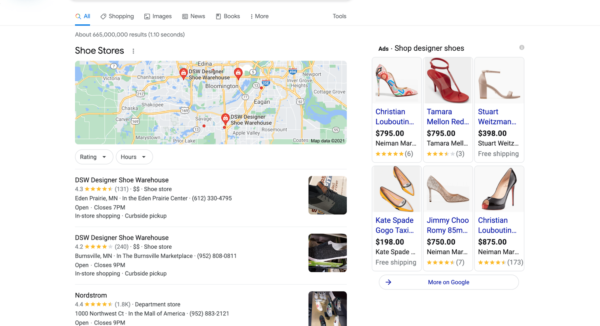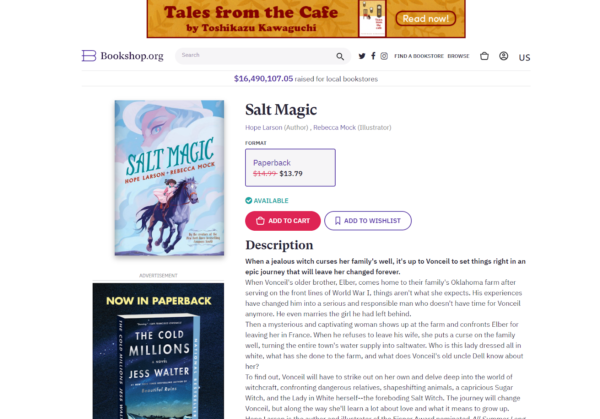
Ads for products that a consumer doesn’t want are white noise — a vaguely irritating hum in the background to which they pay no attention. Nor is it particularly useful to the consumer to see advertisements for products they have no reason to buy right now. Sure, they might enjoy a nice new parka, but if it’s June and the jacket’s full price, they’re not going to click on the link.
Context marketing is kind of a matchmaking service between customer and seller. It shows people what they want, when they want it.
Personalized marketing pays off. 91% of consumers prefer brands that offer relevant offers and recommendations based on information they’ve shared with the brand and on their current searches.
But what will incorporating context marketing into your marketing strategy do for you, and how should you implement it? Let’s take a look.
How contextual digital marketing can benefit you
Contextual digital marketing includes all online marketing that incorporates user information in order to provide more targeted advertisements. This information may be stored on the consumer’s browser, deduced from their current search terms, or directly shared between the consumer and the business.
A strong context marketing campaign can increase your click-through rate (the percentage of customers who click on an ad), your conversion rate (the number of clicks that produce purchases), and your customers’ brand loyalty. It can also decrease consumer annoyance, which may contribute to your bounce rate — how quickly users “bounce” away from your site.
It’s important to note that some advertisers differentiate between contextual advertising and behavioral advertising while others don’t. Behavioral advertising uses cookies to base targeted ads on a consumer’s recent search behavior, while contextual advertising bases targeted ads on the content with which the consumer is currently engaging.
For example, if a consumer’s browser history doesn’t show a lot of past fancy footwear purchases, behavioral advertising won’t regularly show them designer shoe ads. But if they search for “designer shoes,” contextual advertising will bring up shoe ads next to the search results because they are actively engaging with content related to shoes.

In other words, marketers still can benefit from contextual digital marketing in an increasingly privacy-concerned culture, in which more internet users are opting not to let businesses store their information.
How to use context to elevate your marketing efforts
We’ve gone over the basics of context marketing, but how can you take advantage of context marketing opportunities? No matter the channel, certain principles apply. Take the following actions:
Gather information
You can’t have context without information. To get context about your customers, talk to them in person or online. Send them surveys and offer forms on your site. Track website and page performances throughout the day.
Craft buyer personas and journeys for your product. Imagine specific buyers and how they move through your site. Collect data on their:
- Likes and frustrations
- Demographics
- Favorite types of content
- Frequently visited websites
- Frequently asked questions
When you have this information, you can create relevant and empathetic content that treats your customers as the individuals they are.
Segment and personalize your campaigns
Instead of sending out “batch and blast” emails to everyone, refine your messages. Segment your email lists and target your clientele with the opportunities they want.
You can automate personalized email campaigns based on recent purchases, regional weather, time zone, and more. Use consumer demographics judiciously, though. Don’t make assumptions about your customers’ lifestyles, and wait until they indicate an interest before marketing certain items to them.
Make sure that your emails add value for your clients. Offer them discounts, educational content, or surveys that can help them to tailor their own experiences with your brand.
Engage your clientele
It’s not enough to target — you need to engage with genuine two-way communication. Think in terms of dialogue rather than target practice.
You can also level up your content marketing with dynamic calls to action, encouraging the user to engage immediately.
Use engagement marketing — marketing designed to encourage interactions with your brand beyond direct purchases — and connect through email and/or social platforms. Add social share buttons and email subscription forms to your website as well as backlinks to your social media accounts.
Pick the social platform that makes the most sense for your clientele. Survey them to see what they use most, or consult current trends in social media demographics. Then populate that account with fun or useful content addressed to your audience.
Embrace AI
Supplement your own intelligence and hard work with the right tools. To start, let Google use its display network to place your ads on the right websites. Google will take the ads you design and use its artificial intelligence (AI) to determine where they’ll do the most good.
On your website, you can add ecommerce AI that provides personalized recommendations based on the customer’s current search or page content. You can also add chatbots that allow conversational marketing, a real-time interaction in which customers can ask their questions and get answers.
Context marketing examples
We’ve already gone over several types of contextual marketing, including email segmentation, social engagement, chatbots, and ecommerce AI. Here are a few more context marketing examples:
Website smart forms
Another way to add AI to your website is with smart forms. These allow the consumer to tailor their immediate interaction with your website as well as their future relationship with your brand.
For example, a beauty supply business might ask questions about personal beauty concerns or coloring. It can use the answers to customize the page and provide the best recommendations.
Ads based on activity and page content
In the age of remote work and privacy concerns, contextual signals are becoming ever more important to marketers. What is the consumer doing right now? Are they playing a game in which an in-app ad for a similar game might be welcome? Or are they at work, where they might be interested in new productivity software?
Page content also matters for display ads. Use Google’s display network or personal connections to put your ads on the right sites. For example, the book “Salt Magic” has an ad on Book Riot, a huge editorial site:

When you click on the ad, it takes you to the book’s page on Bookshop.org. That landing page also hosts context ads, showing promotions for books like “Bewilderment” and “The Cold Millions.”

Links and landing pages
You can customize the consumer’s journey through your website before they even arrive. Give them the information or access they want up front and make their movement through your site as seamless as possible.
Instead of directing all email and ad links to your homepage, set up relevant landing pages that appeal to the user’s immediate intention. Landing pages are purpose-specific pages that often relate to the link that brought in the user. They can be temporary, correlating to a specific product or sale, and changed as necessary.
Get started with context-driven campaigns
Now you know what context marketing is and how it can benefit you. You also have courses of action to take and possibilities to seize.
Start by thinking about your clientele. Make a list of all the information you can collect about them and the methods available to do so. Fill in the information that you do have and the assumptions you can safely make about segments of your target audience.
The clearer your understanding of your audience, the better you can interact with them in each context.




